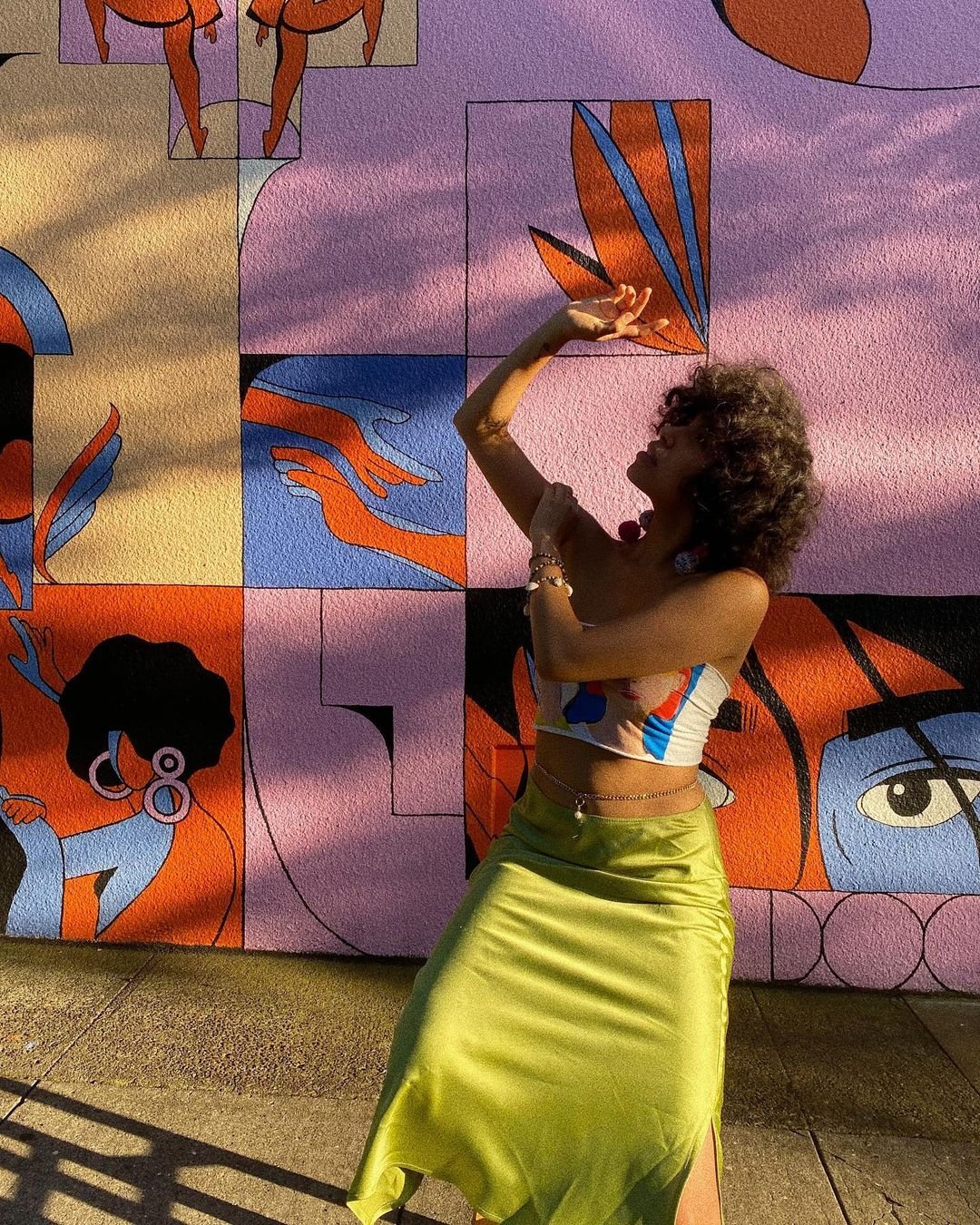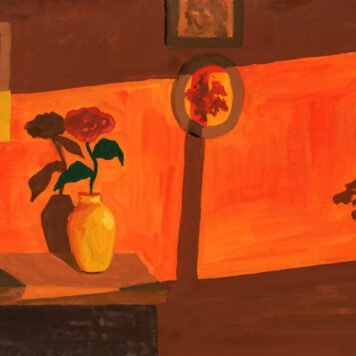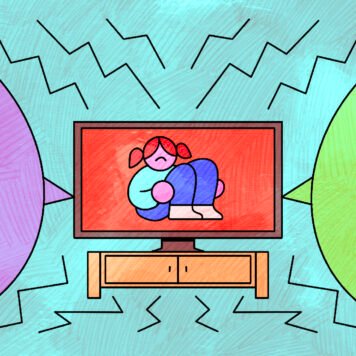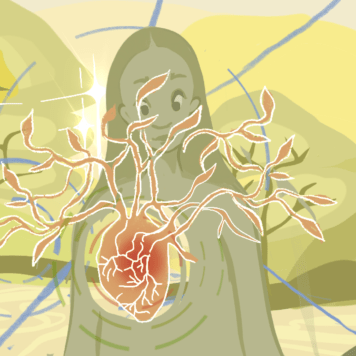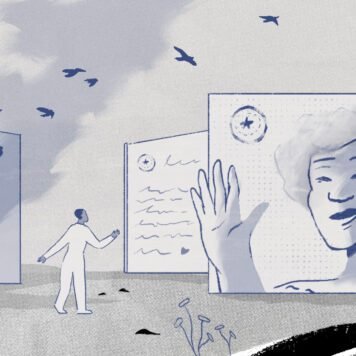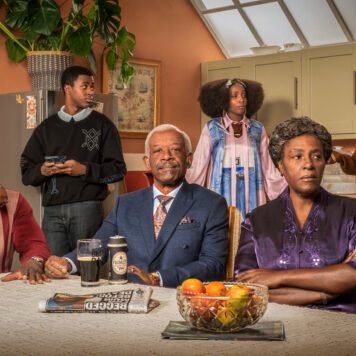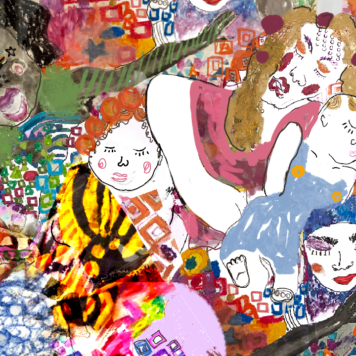“We’ve been told to stay silent. To blend in. To sit down and listen. However, our time is now. It is time to be loud, bold and unapologetic about taking up space.”
People are still fighting for the rights of Black lives – though you wouldn’t know this if you turned on the news. Mainstream media has, since the very beginning, attempted to divert attention away from the Black Lives Matter protests. Throughout the US, and specifically in Portland, Oregon, thousands of people are out on the streets for the 159th day – and counting. Young artist Salomée Souag is one of the voices shouting in the protests, wielding street art as her weapon of choice.
We caught up with Salomée to find out more about her work and how it has adapted into a form of resistance and education since the murder of George Floyd.

How has your upbringing influenced your art?
I was born in Switzerland and I moved to the US during middle school. I moved here with my family as a result of my dad getting a job offer and the opportunity to travel overseas. He decided to take a leap of faith and risk everything for us to have a better life. He is my hero and every move I make is inspired by his strength and power. I will forever thrive in taking risks, getting out of my comfort zone, and believing in myself.
As our first language is French, we knew no English when moving here, and my language sculpted a lot of my life and character, as well as my relationship to having to acclimate and conform to American culture. The isolation I felt from my lack of language meant I started creating and using arts as a form of expression. It was this experience that really drove my journey to becoming an artist.
Most people were quite confused by my background. I am a Peruvian and North African woman that is Swiss and speaks French. I’m a multi-layered woman: an immigrant, an artist, a fighter, a survivor, and I am here to take up space. I am a designer, artist, muralist and whatever else I want to be. I don’t want to identify with only one title, that is thinking too small. I want to work on everything as a creative and use my perspective on all mediums.
How did your experience in advertising shape your current motivations and practice as an artist?
I’ve worked at many agencies, and my experience was always the same: I tried to push boundaries and bring in new ideas, but was constantly silenced. I was made to feel I was unworthy; too ‘different’. It always felt wrong, working for these big corporations. I felt like there was no way to change their mindset and morals.
When you stand for Black Lives Matter and social justice, it is just not compatible with working to support capitalism and consumerism.
They are completely and inherently connected and all part of the bigger problem. I think I needed my experience in advertising to shape where I am today, to feel the urge to go against it, to do everything I can as a designer to share a different message – to use advertising for the revolution, making people care, making them see they are the problem but also the solution. My aim is to make people feel empathy and to inspire others to create more.
Can you tell us a bit more about your experience since May 25th?
It has contained some of the most beautiful moments of this life so far. It has been extremely painful, but it has also been a celebration at the same time. I think a lot of us have been doing this work for a while secretly but are only now getting recognition because it’s elevated everywhere through the Black Lives Matter movement of 2020.
The revolution has always been alive, but now the world is finally paying attention in a different way.
When I started painting in July, I was painting a mural by Revolution Hall, where many of the protests started. I was fuelled by the energy and power of the people around me. This is where it all started. From then on I started wheatpasting all around town. I wanted to show that street art can be beautiful, impactful and inspiring, especially during a time where the media was calling us anarchists for using graffiti to express ourselves on the Multnomah County Justice Centre.
Can you tell us a bit more about Expression Against Oppression?
This project is a living, breathing vigil. Given the nature of street art, it is free, public and anti-establishment. There have been talks about moving it to a permanent space – a museum or something – but it does not belong there. That goes against the essence of street art.
Through my work during this time and with community groups I have found that art can, and is, bringing amazing power to the people; power to the creatives but also power to the youth. It is more than a mural or a painting, each space is a deep story, a struggle, a history, a celebration and a fight.
I want to elevate Black voices and experiences in a way that honours these stories; these everyday heroes. Simultaneously, I also want to make people who are staying silent understand that they are the problem, but also the solution. We all need each other now more than ever.
Subscribe to shado's weekly newsletter
Exclusive event news, job and creative opportunities, first access to tickets and – just in case you missed them – our picks of the week, from inside shado and out.

What do you see as your role as an artist living through this moment?
Art for the revolution needs to be unapologetic and bold; it needs to scream in your face but also be informative and focus on making sure people take this message with them; that they want to share it to educate. Art is essential during this time, especially for Black and Brown artists. This is space we deserve and we are going to reclaim.

At a time when mainstream media is vilifying and criminalising those protesting for social justice, how can art be used as a form of resistance?
When they started to call us anarchists for using graffiti to express ourselves, I wanted to show that street art can be beautiful and should be respected. I think even a small tag and messaging that takes two seconds is as worthy as a mural that takes a week. I also aim to uplift marginalised voices and elevate their stories, while at the same time making it impossible for anyone to move on and go back to normal. This is a revolution and not just a moment.
Wheatpasting is not legal. When you’re out there working on these projects overnight, you learn very much about the city: how it breathes; how it interacts with your energy. Protest art is very different from anything I have done before – it’s very unexpected and chaotic. There is a lot of energy around at the protests – you have to work with the people around you and what feels right at the time. You have to learn on-the-go, and the experience is different every time. You have to move quickly with wheat pasting and spray painting – it’s not the same as a commissioned mural, but it is equally as important. I am working on pieces that come to life on the spot, such as posters or signs. You can see people interact with your pieces right in front of you, and each interaction is so unique. This is my oxygen now: creating art for the revolution; art for change. This type of design has the ability to make a protester feel worthy; feel like they are heard. It brings power to the people. Power to the creatives, power to the youth, power to women, power to the LGBTQI+ community, to all people on the right side of history.
As someone who wasn’t able to go to many art galleries and shows I think free public art is crucial and is the future for younger generations. The art also interacts with its surroundings and you have to learn to detach yourself and let it take on its own narrative, even if people rip it apart or write over it, the world needs to see that and the way the city interacts with it, the way people respond. It’s a protest of its own.
Our voice; our vision, has power. It holds the power of a thousand ancestors and warriors.
I create to evoke any feeling, it can be a bad reaction or a good reaction. All I want is some type of reaction. Our world is so numb to pain, numb to feelings. That’s when we start to lose our humanity.
My job as a creative is to make people feel empathy; to see themselves in the story I am telling through messaging, photography and bold design elements. I hope to always inspire, inspire others to create more, to awake people from their comfort zone and remind them it’s on us to do the work, to inspire to change our normal. I want to elevate Black voices and experiences in a way that honours these stories, these everyday heroes. But I also want to make people who are staying silent understand that they are the problem but also have the power to be the solution. We all need each other now more than ever.
We’re not here to destroy the city. Artists, but also people who are looting and burning – we want to dismantle, but to build something new in its place. All protest matters.
Can you tell us a bit more about the importance of reclaiming public spaces – especially at a time of gentrification – and what role you have seen street art playing in Portland?
After the protests following the death of George Floyd, a lot of windows were broken at Pioneer Square in the centre of Portland. We had many boarded up windows and artists saw this as an opportunity to tell a story. I think it’s beautiful: we created magic from the damage. A lot of street artists started to add pieces and I noticed that there were almost no woman artists there, so I decided to grab whatever paint I had left over and add my piece to this jigsaw. It wasn’t legal, but no one messed with me when I was painting. A lot of people brought their kids to show them visually what was happening in the world right now, to educate them. So many people walked that street when I was painting down there, I took the energy of the people with me in every brush stroke.
This space became multifaceted: a way for people to educate each other; mourn the lives lost; celebrate and honour the lives lost to police brutality or white supremacy. It was a safe space to see revolutionary art.
The canvases are opportunities for new creativity to flourish, and to remind the city that private property development and gentrification has stopped many opportunities for the artistic community, and specifically BIPOC artists, to have a space to thrive. Street art and free public art are the future, an antithesis and response to what has been privatised and coveted by an elite group of control and curation for so long in the art world. So this was about creating a community to share conversations, stories, and be a part of the movement and revolution together.
It’s also a reminder that we shouldn’t undermine street artists and their visions. To provoke a reaction is all that’s needed right now – to make others question their actions or thoughts. The system wants us to be oppressed and complacent. With art, we fight against that oppression. We create a culture that pushes for equality, justice, love, and liberation for Black and Brown people. All protests are essential and worthy, and artistic expression is part of the cycle. I think our job as artists and creatives is to make it impossible for people to move on. We must make them see that they must take action and be the change themselves.
See more of Salomée’s work on her instagram




